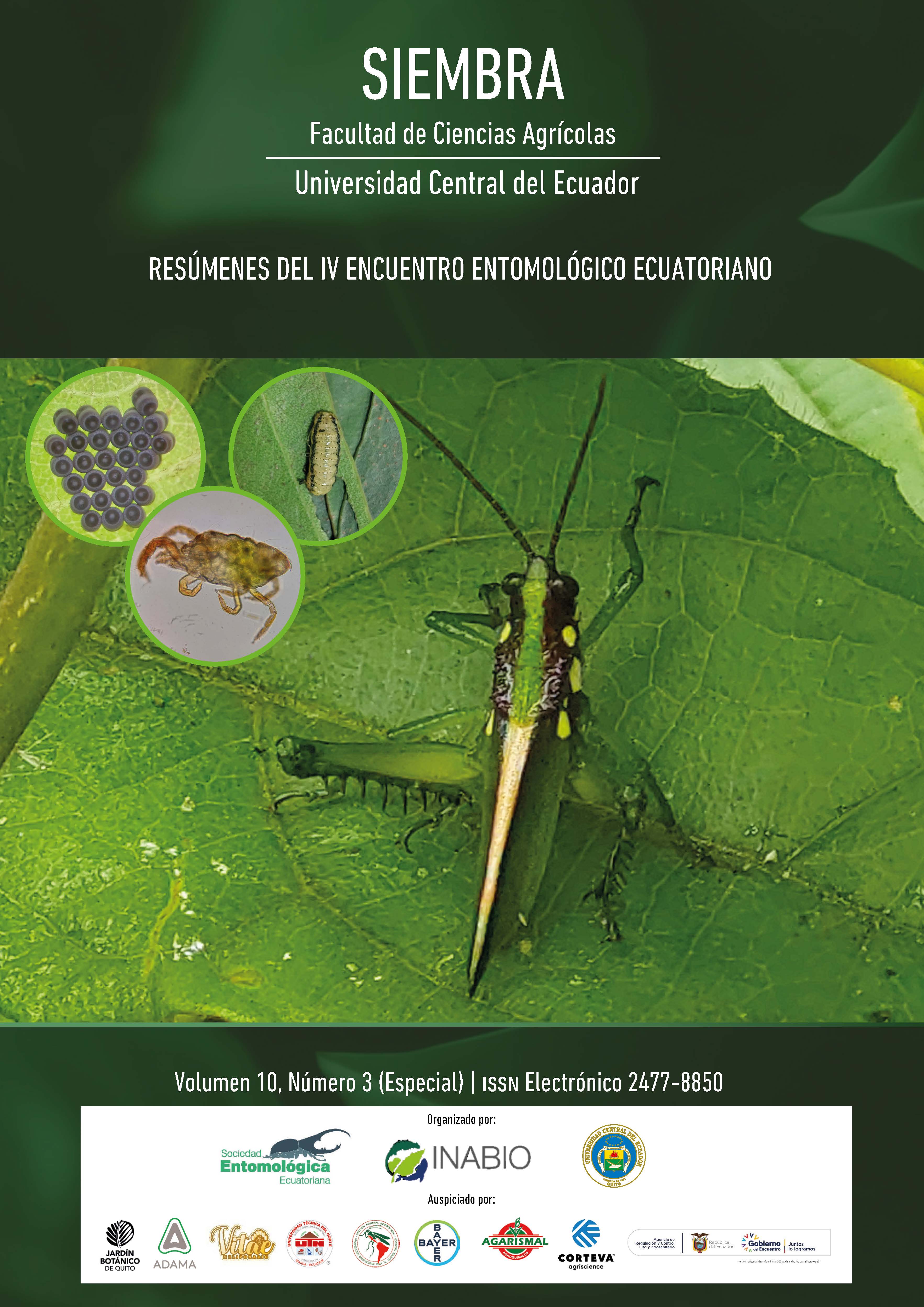ED019. Rainy sites harbor larger insects and predict the appearance of social spiders
Main Article Content
Abstract
The geographical variation in insect size and abundance is a major driver of patterns in species interactions, and biodiversity in general. Insect size patterns have been mainly associated with temperature gradients, where warmer climates leading to either increases, decreases, or no change in insect body sizes. Another important variable, albeit considerably less studied, is how precipitation (and thus primary productivity and resource availability), may limit body size. On the eastern slopes of the Ecuadorian Andes, consistent with temperature placing a upper limit on insect size, insects are bigger in the lowland tropical rainforest compared to higher elevations. This elevational insect pattern is tightly correlated to the occurrence of social spiders in these areas, which can only survive in habitats that harbor an abundance of large insects. Interestingly, the lowland coast of western Ecuador, with similarly warm temperatures throughout, lack social spiders in dry areas, suggesting a secondary role of temperature. We thus tested whether social spiders may be absent from these areas due the effect of rainfall and productivity, as opposed to a combination of temperature and elevation, limiting insect size. We also considered the possibility that variation in insect abundance among sites may prevent social spider colonies to form and persist. We used a combination of four sampling techniques to study insect communities along a precipitation gradient in western Ecuador. We found that insects at our wettest sites were bigger compared to insects at the driest sites, but not more abundant. The probability of occurrence of social spiders in western Ecuador was largely predicted by insect size rather than abundance, consistent with the hypothesis that it is insect size that sets a limit to social spider colony size. Together, these results demonstrate that annual precipitation (thus productivity and resource availability) can play just as prominent a role on insect size patterns as does temperature along elevation gradients, thus a significant factor influencing the distribution of social spider systems and diversity patterns in general.
Downloads
Metrics
Article Details

This work is licensed under a Creative Commons Attribution-NonCommercial 4.0 International License.
The authors who publish in Siembra know and accept the following conditions:
- Authors retain the copyright and grant Siembra the right of first publication of the work, under the Creative Commons Attribution License. Third parties are allowed to use what has been published as long as they refer to the author or authors of the work and its publication in this journal.
![]() This content is licensed under a Creative Commons Attribution-Noncommercial 4.0 International (CC BY-NC 4.0).
This content is licensed under a Creative Commons Attribution-Noncommercial 4.0 International (CC BY-NC 4.0).
- Authors maintain the copyright and guarantee Siembra the right to publish the manuscript through the channels it considers appropriate.
- Authors may establish on their own additional agreements for the non-exclusive distribution of the version of the work published in Siembra, acknowledging their initial publication in the same, such as in institutional repositories.
- Authors are authorized to disseminate their work electronically once the manuscript is accepted for publication.

